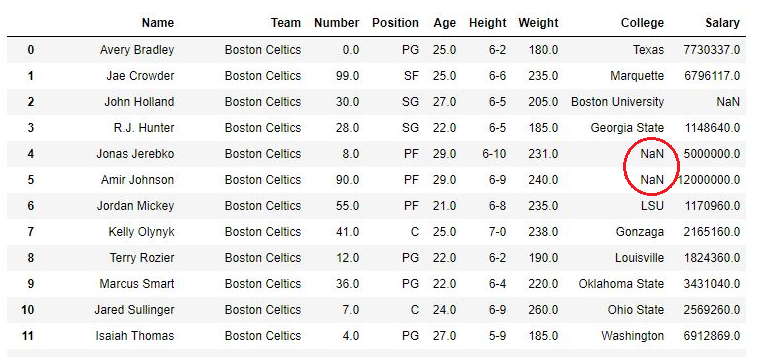Python | Pandas DataFrame.fillna() to replace Null values in dataframe (original) (raw)
Last Updated : 21 Aug, 2024
Python is a great language for doing data analysis, primarily because of the fantastic ecosystem of data-centric Python packages. **Pandasis one of those packages and makes importing and analyzing data much easier. Sometimes csv file has null values, which are later displayed as _NaN in Data Frame. Just like the pandas dropna() method manages and remove Null values from a data frame, fillna() manages and let the user replace NaN values with some value of their own.
Pandas DataFrame.fillna() Syntax
**Syntax: DataFrame.fillna(value=None, method=None, axis=None, inplace=False, limit=None, downcast=None, **kwargs)
**Parameters:
- **value : Static, dictionary, array, series or dataframe to fill instead of NaN.
- **method : Method is used if user doesn’t pass any value. Pandas have different methods like bfill, backfill, or ffill which fills the place with value in the Forward index or Previous/Back respectively.
- **axis: axis takes int or string value for rows/columns. Input can be 0 or 1 for Integer and ‘index’ or ‘columns’ for String
- **inplace: It is a boolean which makes the changes in data frame itself if True.
- **limit : This is an integer value which specifies maximum number of consecutive forward/backward NaN value fills.
- **downcast : It takes a dict which specifies what dtype to downcast to which one. Like Float64 to int64.
- ****kwargs : Any other Keyword arguments
Python Pandas DataFrame.fillna() to Replace Null values in Dataframe
Below are the ways by which we can replace null values in Dataframe in Python:
- Replace NaN Values with String | Pandas
- Before Replacing
- After Replacing
- Using method parameter
- Using Limit
Pandas: How to Replace NaN Values with String
**Example 1: Replacing NaN values with a Static value **Before Replacing
In this example, we are using pandas library to import the “nba.csv” file and create a DataFrame named “nba” containing the data from the CSV file, which is then displayed using the nba variable.
Python `
importing pandas module
import pandas as pd
making data frame from csv file
nba = pd.read_csv("nba.csv")
nba
`
**Output
**Example 2: Replacing NaN values with a Static value After replacing
In the following example, all the null values in College column has been replaced with “No college” string. Firstly, the data frame is imported from CSV and then College column is selected and fillna() method is used on it.
Python `
importing pandas module
import pandas as pd
making data frame from csv file
nba = pd.read_csv("nba.csv")
replacing na values in college with No college
nba["College"].fillna("No College", inplace = True)
nba
`
**Output: 
Replacing Null Values Using method Parameter
In the following example, method is set as _ffill and hence the value in the same column replaces the null value. In this case _Georgia State replaced null value in college column of row 4 and 5. Similarly, bfill, backfill and pad methods can also be used.
Python `
importing pandas module
import pandas as pd
making data frame from csv file
nba = pd.read_csv("nba.csv")
replacing na values in college with No college
nba["College"].fillna( method ='ffill', inplace = True)
nba
`
**Output
Replacing Null Values Using Limit
In this example, a limit of 1 is set in the _fillna() method to check if the function stops replacing after one successful replacement of NaN value or not.
Python `
importing pandas module
import pandas as pd
making data frame from csv file
nba = pd.read_csv("nba.csv")
replacing na values in college with No college
nba["College"].fillna( method ='ffill', limit = 1, inplace = True)
nba
`
**Output:
As shown in the output, The college column of 4th row was replaced but 5th one wasn’t since the limit was set 1. 